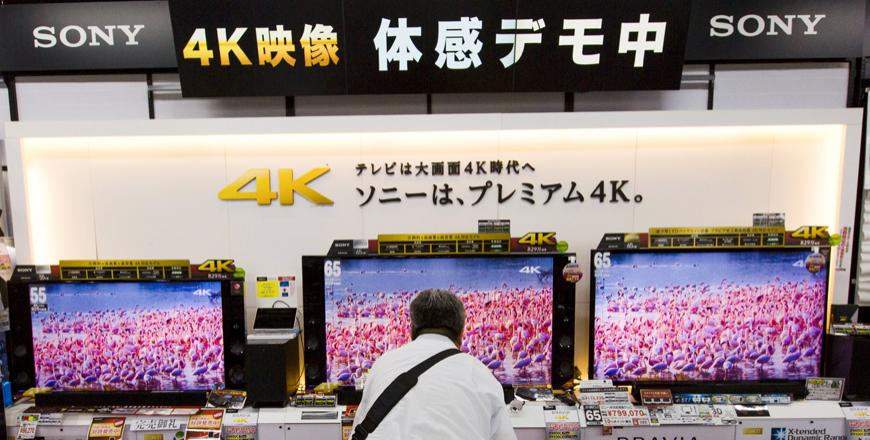You are here
Screens closer than ever to the perfect image
By Jean-Claude Elias - Mar 15,2018 - Last updated at Mar 15,2018
If you have recently seen ads promoting stunning looking TV and computer displays you probably have noticed the OLED vs QLED war. The first is LG’s brainchild and the second Samsung’s, the two giant makers that are leading the market and supplying other manufacturers with their displays. It is all about making and showing you the best image.
Whereas none of the main components in a computer can be considered as being the most important one, the display certainly is an essential part of the system. After all it is the one we look at all the time. And when you put actual computers aside and think TV-only then, understandably, the display becomes “the” core of it all. To produce the best possible screen, manufacturers have been constantly improving the quality of the image for decades, well before computers became household items.
Today the quality of a computer, or computer-like device, is as important as that of a TV set. One may be lost with acronyms like OLED, QLED, UHD, 4K Ultra HD, 8K Ultra HD and others, that describe screen technology. Whatever the letters represent, it is all about the quality of the picture in the end. How close is it to the real thing?
A complete description of all the characteristics that make a modern display is beyond the scope of this article, but two of them can be selected for being critically important and the reason why OLED, QLED and such are at war: these are the sharpness (or resolution) and the colour gamut that the screen can render.
With 4K and above, it is reasonable to say that the industry is now producing displays with a level of resolution, of clarity that is so good that even the most demanding eyes would not ask for more. This is what is referred to as Ultra High Definition.
A more challenging aspect is the colour gamut or spectrum that the screen can produce. Given that in nature the number of colours is infinite, even a screen that can show millions or even billions of colours would not be a match for Mother Nature. Luckily for us — and for the manufacturers — beyond a certain number of colours our eyes can hardly make any distinction between an electronic display and nature.
Showing the largest possible gamut is important not only to please the eye but also to allow precise colours calibration, control and comparison when processing photos and printing them. Professional photographers and printers are usually very demanding in that sense and can tell the difference between an average screen and a great one.
OLED and QLED are leading the market today, with OLED having a slight advantage overall and for the time being, considering all the technical reviews found on the web and also the simple fact that it has been adopted not only by its inventor (again, LG), but also by a number of major players like Sony, Panasonic and Philips.
As always with technology, additional considerations come to make a clear cut choice difficult if not impossible. For example OLED does not last as long as LED. Or QLED has a larger colour spectrum than OLED. Or QLED is too expensive and also too new — let’s wait and see how it fares over time. OLED has proven its popularity on a number of devices, not only TVs…, etc.
Dell’s Alienware top of the line multimedia oriented laptop uses OLED, and so does Apple MacBook. On the other hand QLED is too new and no laptop computer, yet, is equipped with a QLED monitor; unless Samsung is keeping it for TVs, exclusively.
Notwithstanding details and valid or invalid arguments, virtually all displays made after 2016 show superb images, the quality of which we could not even dream of a mere 10 years ago. Especially when they are made by makers like Sony, LG, Samsung or Panasonic. Apart from that acronyms do not really matter.
Related Articles
TOKYO — Japan’s once-mighty electronics makers have lost billions of dollars from TVs but Sony Corp. and Panasonic Corp.
LG Display Co. has developed an 18-inch (45.72cm) flexible display that can be rolled into the shape of a thin cylinder, a step towards making a large display for flexible TVs.
Smartphone screens that are so big that they aren’t portable anymore; pixel resolution and image sharpness that surpass the resolution of the human eye; this is what manufacturers are doing to keep selling — even if it doesn’t necessarily make sense.


















